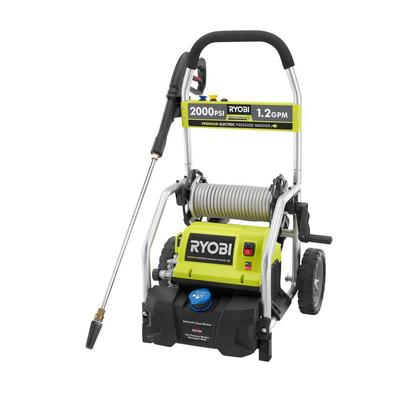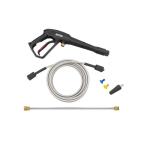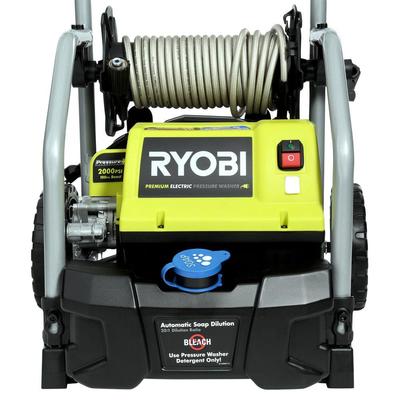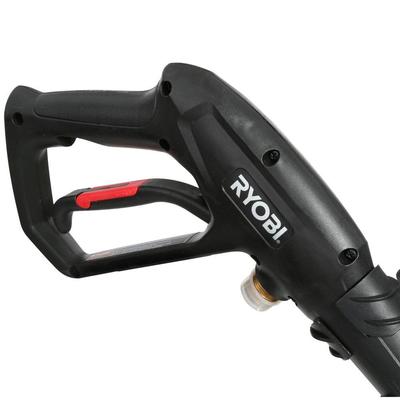|
If you don't you really should. It has so many uses and it will save you money. I'll show you how to get started and your garden will reap the benefits! Composting. The first words that come to mind... work, complicated, messy and smelly, right? If your composting pile shares any of these words, you may not be doing it the right way. Composting should be simple. Yes, there is some work involved, but it shouldn't be back-breaking. The whole process is simply layering organic materials with a bit of soil, keeping it moist and stirring it a bit. If you can do that you will be rewarded with "brown gold" to be used in your flower beds, on your lawn, vegetable garden, and more! Types of composting
There are 2 types of composting, cold and hot. Cold Composting is the one that usually comes to mind first... yard waste, coffee grounds, fruit and veggie peels and eggshells, in a bin, that you turnover, and mix once a month with the hopes that it decomposes within a year or two. Hot Composting is the less common one, but I recommend it. The reward comes within 3 or 4 months during the warmer weather. The four ingredients required for the cooking process, not unlike a straw bale garden, is nitrogen, carbon, air, and water. All of these items speed-up the process, provides food for the microorganisms, and in return breaks down the organic material. Use these tips to start your composting project! What should I compost?
Pro Tip: Onions and garlic are not welcome in your compost pile, they both repel earthworms. Worms are good and play a vital part in the process. What NOT to compost...
These items can make your compost smell and attract unwanted animals and pests. A well maintained pile should smell earthy-sweet and fresh. Combine green & brown materials You will need enough green and brown organic materials to make a pile at least 3 feet deep. Combine your wet, green items with your dry, brown items by alternating layers. If your compost pile looks too wet just add more brown items. If it looks too brown and dry just add green items and water to make it moist. Watering Be sure to keep your compost pile moist like that of a damp sponge. If you make it too wet the important microorganisms will die. It's a fine balance but if done correctly they will flourish. Pro Tip: if you are gardening geek like me you can actually use a thermometer to be sure everything is cooking properly, about 130 to 150 degrees. Generally if the center of the pile feels warm to the hand, it's doing it's job Stir your pile Your pile needs oxygen. Once a week you should be turning it over with a garden fork and do so thoroughly. There should be equal amounts of green and brown materials throughout. Turning the pile will help it breakdown faster. Put it to good use When your compost pile becomes dry, brown/black and crumbly, aka "Brown Gold", the process of cooking is over. Good job! The pile won't be giving off any more heat and it will be ready to use around your property. With some raked leaves, kitchen scraps, a little work, and some patience, you'll be using compost in your gardening like a pro!
0 Comments
Add coffee grounds to your garden!
It's a great way to enrich the soil with nitrogen, which encourages microorganism growth. Another benefit, it deters snails and slugs that may cause damage to your plants. The grounds also attract earthworms, which is really beneficial for the soil. If you don't drink coffee, visit your local coffee shop. Most have a "Grounds For Your Garden" program. If you want to read more about this hack, please visit the Washington State University’s research page! You just went into the garage to dig out your outdoor furniture cushions and they have those nasty black mildew spots and blotches. You're thinking to yourself, should I try to clean these or run to the store and spend $100 to $250 on replacements? If we told you wouldn't need special cleaners or have to scrub for hours, and your old cushions would look like new again, would you believe us? The solution... a pressure washer. If you don't have one borrow a friends and ask them how to use it, it's really easy. If borrowing isn't an option, you could always rent one.
You'll be amazed at how well it works and feel good knowing, you're not using harsh chemicals, saving time, and the money you will save! Spring is coming and it'll be time to repot our household plants. Keep all of the soil where it belongs with the help of a common coffee filter. Simply line the bottom of the pot with the filter first and then add your soil. The filter keeps the drainage holes free from clogging and lets the water through, not the soil. Give it a try!
|
BlogscapingThe official blog for Lowe's Landscaping, LLC news and information! Categories
All
Archives
March 2020
|
/
- 1
- 2
- 3
- 4
- 5
Lowe's Landscaping Services was great he did an awesome job and we have received so many compliments about how the lawn and shrubs look that we have given everyone who asked Lowe's Landscaping number so that they can contact them. They did such an awesome job that we are going to use their services again to do the trimming of the shrubs in the fall. Joshua is great and did everything we asked and even help us pick out some flowering bushes to fill in the empty spaces in the front of our house. Thank you Joshua and please thank your crew for a job well done !
Susan P.
/
- 1
- 2
- 3
- 4
- 5
/
- 1
- 2
- 3
- 4
- 5
This was my first experience with Lowe's Landscaping Services. The team is reliable and their work professional. I intend to continue using Lowe's Landscaping Services indefinitely. They successfully gave a manicured appearance to my lawn. Nice job!
Margaret S.
/
- 1
- 2
- 3
- 4
- 5
/
- 1
- 2
- 3
- 4
- 5
Quick, efficient and quality of work. Josh arrived on time and had a contract ready to go. Was knowledgeable, honest and a hard worker. Quality product and overall great job!
Marykate N.
/
- 1
- 2
- 3
- 4
- 5
/
- 1
- 2
- 3
- 4
- 5
Very polite interaction and very reliable service!
Kathy S.
/
- 1
- 2
- 3
- 4
- 5
/
- 1
- 2
- 3
- 4
- 5
We are so pleased with all your hard work! Thank you for all you’ve done through the years Josh!
Michelle T.
/
- 1
- 2
- 3
- 4
- 5
/
- 1
- 2
- 3
- 4
- 5
Lowe’s Landscaping is the best. Our lawn looked wonderful this year and great fall cleanup! Wonderful company and looking forward to 2018!
Elizabeth B.
/
- 1
- 2
- 3
- 4
- 5
/
- 1
- 2
- 3
- 4
- 5
I could not be happier with the service, my husband and I have been receiving for snow removal, thank you Josh!
Elizabeth B.
/
- 1
- 2
- 3
- 4
- 5
/
- 1
- 2
- 3
- 4
- 5
Great team of guys that are meticulous with their work... would highly recommend!
Jonathan G.
/
- 1
- 2
- 3
- 4
- 5
/
- 1
- 2
- 3
- 4
- 5
I have used Lowes Landscaping Service for the past 3 years and I've been more than happy with their service. Each spring they have edged and mulched my garden beds as well as planted shrubs. I can always count on a professional job!
Carol B.
/
- 1
- 2
- 3
- 4
- 5
/
- 1
- 2
- 3
- 4
- 5
5 STARS!
Daniel Y.
/
- 1
- 2
- 3
- 4
- 5
/
- 1
- 2
- 3
- 4
- 5
Professionally owned and operated by a highly knowledgeable man who makes sure your job is done properly and professionally... the first time!
Devin R.
/
- 1
- 2
- 3
- 4
- 5
/
- 1
- 2
- 3
- 4
- 5
Historically I have been a very difficult person to please when it came to lawn and property services but after becoming involved with Lowes, my overall level of satisfaction with their landscaping knowledge, honesty, reliability and fair prices have shot thru the roof. Over the last few years I have counted on them for several yard upgrades, from lawn maintenance, irrigation issues and design and highly recommend them for any type of landscaping need.
Kenneth D.
/
- 1
- 2
- 3
- 4
- 5
/
- 1
- 2
- 3
- 4
- 5
Joshua Lowe and his father came to my home to de-thatch the lawn, edge the beds, and complete the spring clean up. I am so impressed with the results. My property has never looked better. It would have taken me weeks to do the same job and I know it would not have looked as good. What really impresses me the most about Josh is his communications. He is responsive to phone or email, professional, and polite. He is always on time and I know I can depend on him. My friends referred me to Josh and I am beyond pleased with his work.
Just The Facts M.
/
- 1
- 2
- 3
- 4
- 5
/
- 1
- 2
- 3
- 4
- 5
Josh and his team always go above and beyond. From landscaping to snow removal he’s your guy!
Katherine M.
/
- 1
- 2
- 3
- 4
- 5
- 0
- 1
- 2
- 3
- 4
- 5
- 6
- 7
- 8
- 9
- 10
- 11
- 12
- 13
|
CONTACT
Lowe's Landscaping Services, LLC Dracut, MA Owner Joshua Lowe www.loweslandscapingservices.com [email protected] (978) 835-5098 NEWSLETTER
Subscribe to our quarterly newsletter to receive tips and savings! |
REQUEST A FREE ESTIMATE
Contact us to discuss your landscaping needs today! |
|
|
COPYRIGHT ©2020 LOWE'S LANDSCAPING SERVICES, LLC
|





 RSS Feed
RSS Feed
